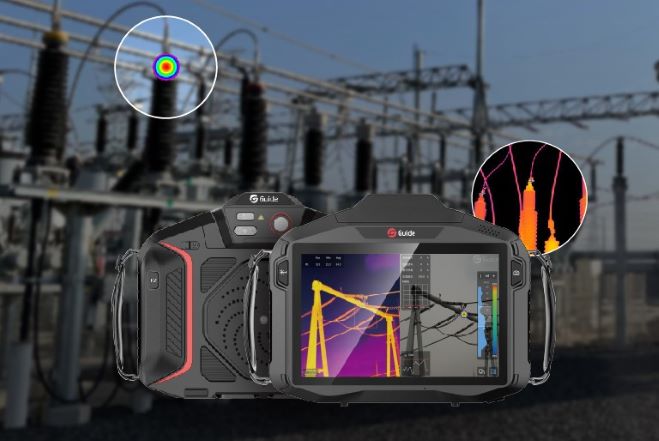Thermal night vision monocular as a night observation of animals, terrain, prevention of danger, and search and rescue teammates of the magic weapon, the previous application of infrared products in the military handheld thermal imager began to go between the public, by more and more donkeys and outdoor enthusiasts accepted, and gradually turned into necessary equipment. In this article guide sensmart will introduce you to the main indicators for choosing thermal monoculars
![]()

First of all, to clarify the working principle of the thermal monocular, the principle of infrared thermal imaging is not mysterious, from the analysis of physical principles, the human body is a natural source of biological infrared radiation, which can constantly around the emission and absorption of infrared radiation. The temperature distribution of the normal human body has certain stability and characteristics, the temperature of each part of the body is different, forming a different thermal field. When a disease or functional change occurs somewhere in the body, the blood flow in that area will change accordingly, resulting in a change in the local temperature of the body, which is expressed as a high or low temperature. Based on this principle, the body's infrared radiation is captured by a thermal imaging system and converted to a digital signal to form a pseudo-color thermogram.

The most important thing in choosing thermal imaging is the heart: the infrared detector of the thermal imager. The heart of a computer is the CPU, and the heart of a thermal imager is the infrared detector. This is the most important indicator for choosing an image!
A detector is divided into cooled and uncooled, uncooled small size and low power consumption, the mainstream of the current civilian market are uncooled infrared focal plane detector, and as a bridge between the perception of infrared radiation and output signal, the thermally sensitive element is the core of the infrared detector.
At present, the mainstream materials of uncooled thermal sensitivity in the field of infrared are vanadium oxide and amorphous silicon. Comparison between the two, due to material properties, vanadium oxide sensitivity to amorphous silicon more than double, the same TCR conditions, amorphous silicon noise is higher than vanadium oxide two orders of magnitude, the specific performance of amorphous silicon images have a sense of veiling, not sharp and transparent, amorphous silicon imaging effect is significantly inferior to vanadium oxide detector.
Therefore, in the imaging requirements of the industry and the scene is not high, you can use amorphous silicon detectors, if the imaging requirements are high, or imaging distance, use vanadium oxide detectors. Considering personal affordability, the budget is not high to consider amorphous silicon, if the budget is higher, the first choice of vanadium oxide products.

Thermal sensitivity is the core indicator of a thermal imager, and NETD is the noise equivalent temperature difference, the lower the value of imaging more clear. Poor sensitivity, the observed point is drowned out by noise, will lead to the field can not guarantee the most basic safety features. At the same time, it is also necessary to prevent discrimination blurring to prevent accidental injury to teammates. Why thermal imaging camera NETD value is the same, but the imaging effect varies greatly? Experts pointed out that there are some manufacturers of false label NETD situation, some manufacturers take to a limit of the NETD value, this particular value as a constant to mark. In the end, you still have to see with the eyes and take several different thermal imaging camera imaging effects to do a comparison.
There are also indicators of detector pixels. Do not be confused, detector pixels and eyepiece pixels are two different things, and some businesses often confuse these two concepts. A civil infrared camera in the relatively high-end products pixel 640 × 512, this high-end infrared camera infrared pictures were taken clear and delicate, 500 meters away can distinguish the size of a hare object; mid-range infrared camera pixel 384 × 288, this series of infrared cameras can be 700 meters away can accurately identify the walking human body. When it comes to frame rate, a good thermal imaging camera should have a frame rate of 30Hz~50Hz, otherwise, it can't work on many occasions. The high or low frame rate directly indicates the performance and response speed of the thermal imaging camera.
Notes on the use of thermal night vision monoculars.
1、Measuring distance should be appropriate
The infrared thermal imager of the traditional thermal imaging camera advantage is that it can be tested at a distance, and the operator can be operated remotely to obtain the imaging information of the target object. But the measurement distance of this instrument is also a certain limit. If it exceeds the measurement distance of the camera, the instrument will not be able to return the image captured by the camera to the host computer smoothly. So each time we use the instrument to observe objects before, first of all, we should investigate the range of object activities, and then adjust the parameters of the instrument testing distance.
2、Adjust the focal length
The infrared thermal imaging camera has some of the functions of the camera, you need to adjust the focal length before use, and the focal length of the range of large high, or low is not conducive to reading the temperature. The infrared camera is divided into manual focus and electric focus a kind, manual focus is more accurate, and electric focus is more convenient, you can choose and use it according to your needs when using.
3, temperature measurement range to be appropriate
The infrared thermal imager is by measuring the temperature of the object, and then according to the object's temperature forms a different infrared imaging map. We have applied this technology to the search and rescue scene, saving the lives of many people. This instrument can measure a variety of temperatures, but the temperature of the temperature measurement or a certain range. Too high a temperature will lead to damage to the surface of the instrument, too low a temperature instrument will not be able to sense the presence of objects. The operator must do a careful study and investigation of the working temperature environment before using the instrument for work. We want to ensure that the temperature of the site will not cause damage to the instrument, while the instrument can still work properly.
4、Prevent direct sunlight
Infrared thermal imager in the winter when the infrared measurement of objects, the measurement of the difficulty will be greater. Because most of the winter object temperature and the ambient temperature difference is not much, so we in the object temperature measurement is easy to be affected by the environment. The difference between the temperature of the object and the environment is not large, plus the direct sunlight on the object increases the temperature, adding difficulty to the work of the thermal imager. Shenzhen infrared thermal imager which we can try to choose at night for the winter measurement activities. If the object must be measured during the day, we must avoid the influence of direct sunlight.













.svg)

(1).jpg)
.jpg)


